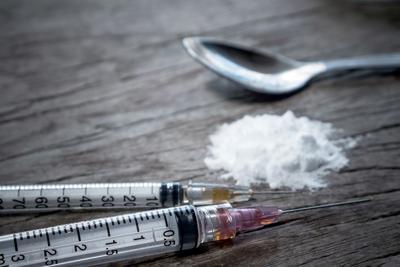IN June 1982, Marianas Variety published a report from the South Pacific Commission (now known as the Pacific Community) stating that “some of the Pacific Islands are now being used as staging posts by small ships and aircraft to facilitate the movement of [illegal] drugs.”
In the same month, a Variety front-page news story was about the “three Saipan men accused of participating in a heroin smuggling ring…in Guam.” The prosecution said the heroin came from Bangkok, Thailand and was purchased by the ring leader for $38,000 (worth about $128,000 today), and subsequently distributed in Guam.
America’s “war on drugs” officially started in July 1971, and today, over half a century later, the war rages on. Recently, a former U.S. attorney general urged a further escalation to “defeat” Mexico’s cartels. But as a University of Illinois professor pointed out in a letter to the editor published by the Wall Street Journal, although “the evils perpetrated by the cartels are real…they are operating in the finest tradition of a free-enterprise system: supplying a product desired by their customers.” The professor added, “Entrepreneurs will always arise to fill a void in supply. The Medellín and Cali cartels were eliminated; has anybody noticed a reduction in the drug trade because of that? The drug trade exists because there are people who want to do drugs, regardless of the personal, societal, legal and national consequences.” (My italics.)
On Saipan 41 years ago, Variety reported that a man charged with marijuana trafficking had pled guilty and was sentenced to 10 days in jail, two years probation and a $500 (worth about $1,500 today) fine.
In other court news, a man who pled guilty to drunk driving was sentenced to 90 days probation, 80 hours of community service and a $100 (worth about $314 today) fine. “His blood alcohol level when he was picked up registered 0.22, significantly higher than the 0.15 considered to conclusively indicate [that] a person is intoxicated.” Current CNMI law states: “A person shall not drive, operate or be in actual physical control of any vehicle while: (1) Having a Blood Alcohol Concentration…of 0.08 percent or more as measured by a breath or blood test….” In 1982, the traffic prosecutor told Variety that there had been 26 drunk driving cases in the first five months of the year. “Driving under the influence of alcohol is getting to be an epidemic here,” he added.
Also in the news: The Kiwanis Club, in coordination with the Governor’s Committee for Island Beautification and the Department of Public Works, had “identified the peninsula at Smiling Beach as an area which needed work…. The Kiwanis Club picked up trash near the picnic area, totaling 30 trash bags altogether.”
To help prevent juvenile delinquency, the Criminal Justice Planning Agency funded an $18,000 (worth about $56,000 today) media campaign which consisted of television commercials, radio spots and posters. The goal was “to change people’s attitudes towards family interaction and the use of alcohol and marijuana. In a 1979 study of delinquency, CJPA had found high correlations between delinquency, alcohol and drug abuse and families….”
CJPA at the time was also funding Teen Corps, a youth employment program. Pacific Research and Development Agency, a non-profit organization, would hire “problem youth” who are then placed with private businesses. “The private employer agrees to retain the youth on its own payroll if he successfully completes the program.” So far, Variety reported, “the youth are all employed…and…are performing well…. [They] are expected to remain with [the company] after the completion” of the program.
The Public School System’s predecessor, the CNMI Department of Education informed the governor that it could not continue to operate without funding assistance, and that it needed some $171,000 (worth about $530,000) to cover payroll. “The department’s largest deficit is in administration…. Other areas facing deficits are fuel for the buses, the Saipan secondary account and aid to non-public schools.” Moreover, “[t]here is a desperate need for more funding in the operational budget for materials and supplies.” The department said it “cannot rely on federal programs [because these] are intended to supplement, not supplant” local funding.
At the legislative building (which is now Guma Sakman), the House conducted a public hearing on a 3% sales tax to be imposed on all goods except food products. In his testimony, the attorney general stated that with food exempted, the bill would produce much lower revenues than the current receipts tax. “If we go with this, the impact on revenue is a drastic reduction, multi-million dollars,” he said. An attorney of a private company told lawmakers that the sales tax “would cause great harm to the tourism industry,” citing research which indicated that the CNMI would lose over $1 million (worth over $3 million today) and 250 tourist-related jobs if the sales tax were implemented. “The Marianas Visitors Bureau agreed, citing the promotion in Japan of the Commonwealth as a duty-free destination.”
Politicians, then and now, tend to assume that if you increase tax rates you will, for sure, collect more tax revenues. Economist Thomas Sowell calls it the “invincible lie.” As he and other economists have repeatedly pointed out, there is no automatic correlation between the raising and lowering of tax rates and whether tax revenues move up or down.
So why do many politicians support tax-hike measures especially those targeting the “rich”?” Because, Sowell said, “class warfare politics can increase votes for [their] re-election, even if it raises no more tax revenues for the government.”
Send feedback to editor@mvariety.com

















